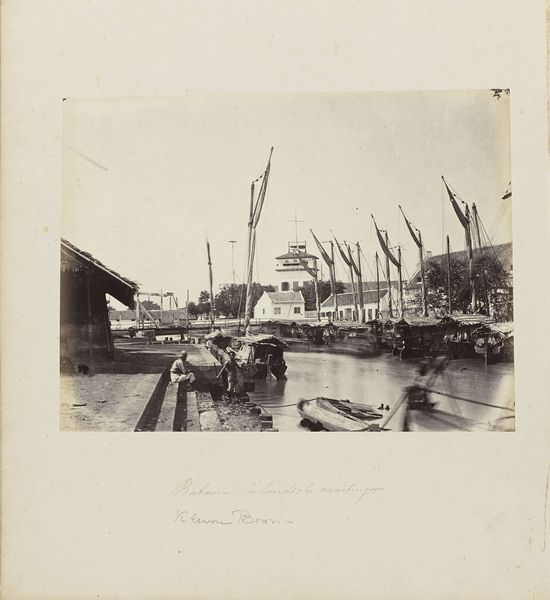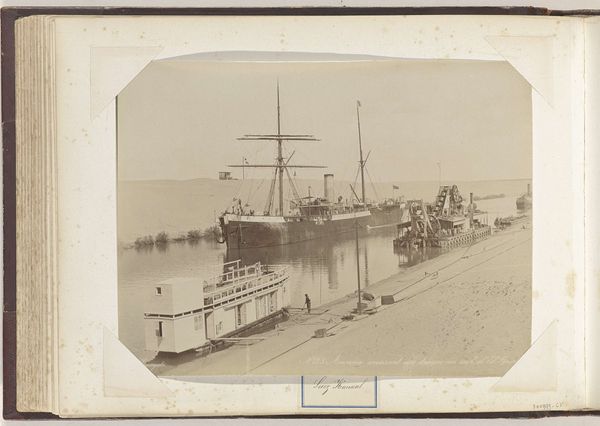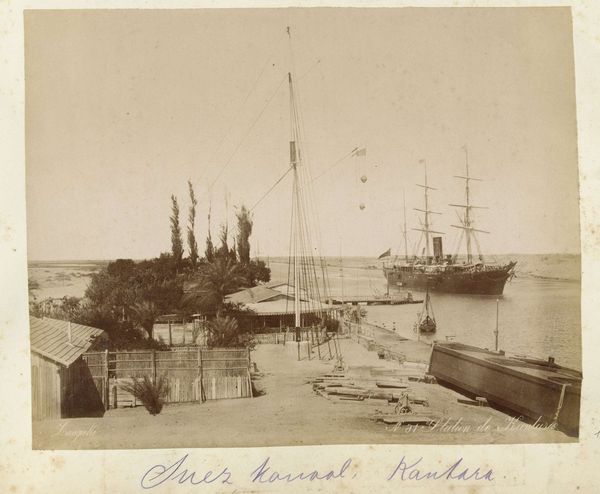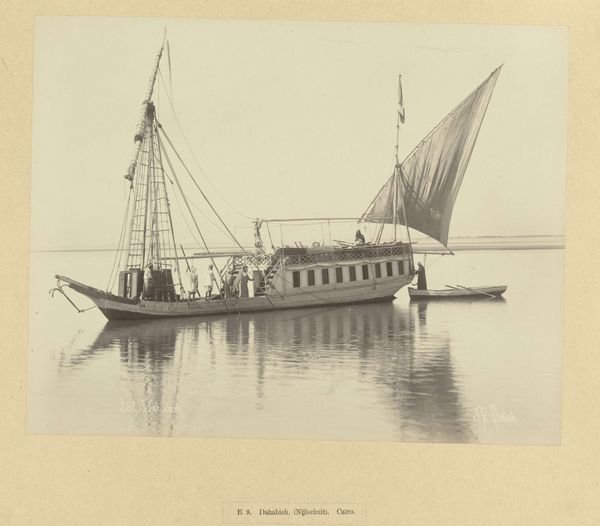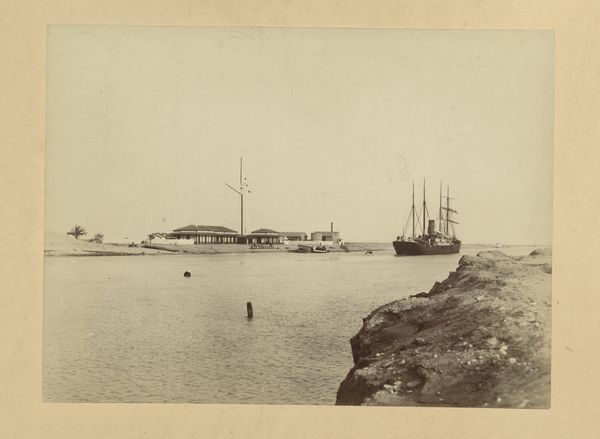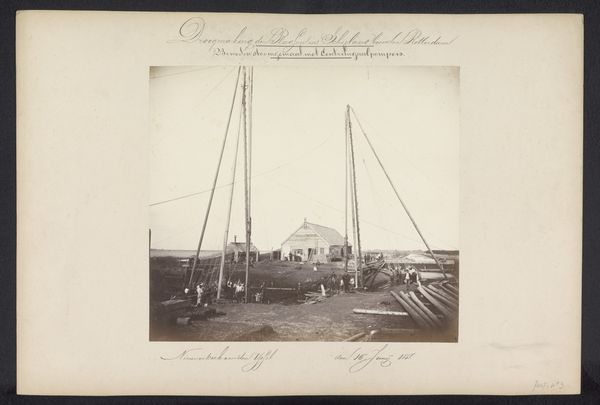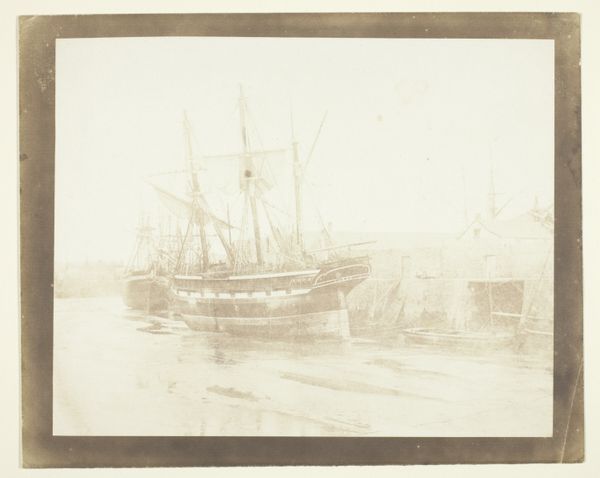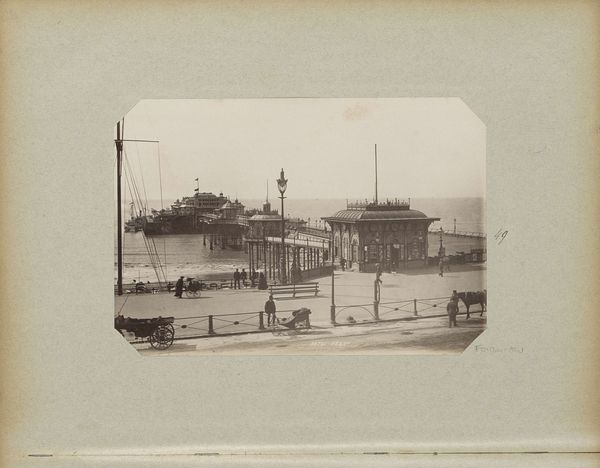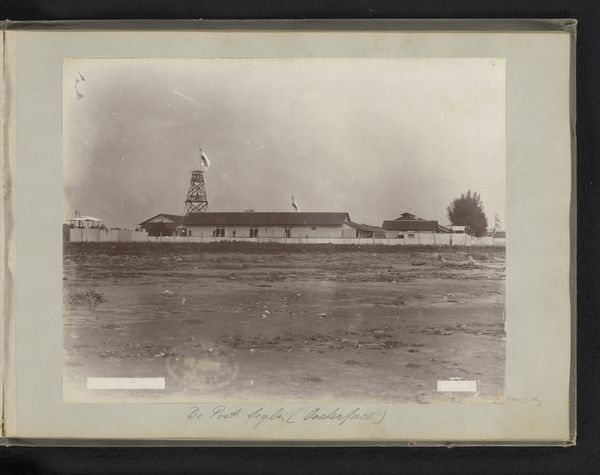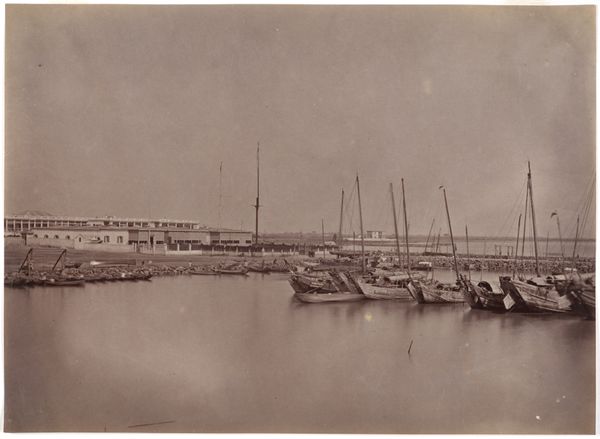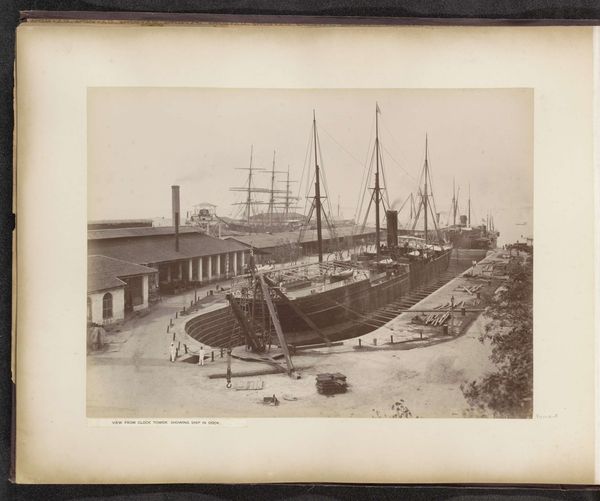
photography
#
landscape
#
photography
#
cityscape
Dimensions: height 166 mm, width 228 mm
Copyright: Rijks Museum: Open Domain
Editor: So this photograph, “Huis aan het water van de gouverneur in Buchire”, or "House on the water of the governor in Bushire", was taken by Antoine Sevruguin sometime between 1880 and 1895. It's a landscape of a coastal city – quite still and quiet, almost deserted. The tones give it a sense of timelessness, of something preserved. What do you see in it? Curator: It whispers to me of empire, doesn't it? This liminal space between land and water, a kind of governmental threshold. Look how the stern geometry of the building contrasts with the unruly waterline, as if to assert control over nature itself. What strikes you about that stark contrast? Editor: I didn't think of it like that! I guess I just saw the building as a place of authority, the tower definitely gives off a watchtower feeling... I suppose it represents this attempt to organize space... But I wonder about the people who lived and worked there. Curator: Precisely! Sevruguin often captured these poised, almost vacant spaces, which encourages us to imagine the lives lived within and around them. Think of the bustling port outside the frame, the whispers in corridors. It’s a ghost of a photograph, if that makes sense. Like an archeological artifact... what do we learn about a culture and civilization through the images they produced? Editor: So, this photograph is less about a literal depiction of a landscape and more about an evocative exploration of power dynamics and societal structure? Curator: Exactly! The emptiness is purposeful; the scene invites our gaze into a broader reflection. Editor: This really encourages one to look more deeply into the symbolism within landscapes, and historical contexts for seemingly simple images! Thank you. Curator: My pleasure! Seeing anew is the most any artist—or art historian—could hope for.
Comments
No comments
Be the first to comment and join the conversation on the ultimate creative platform.
